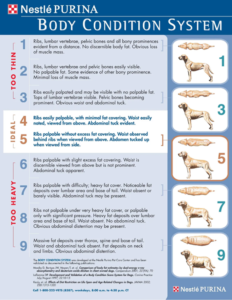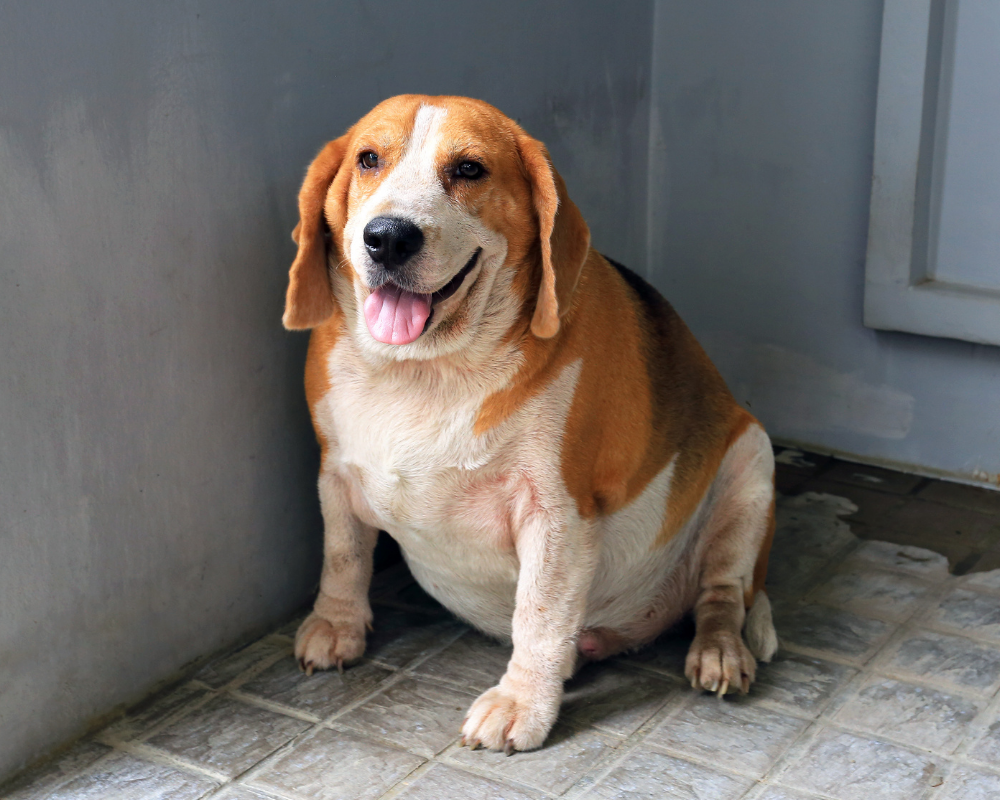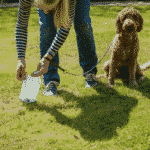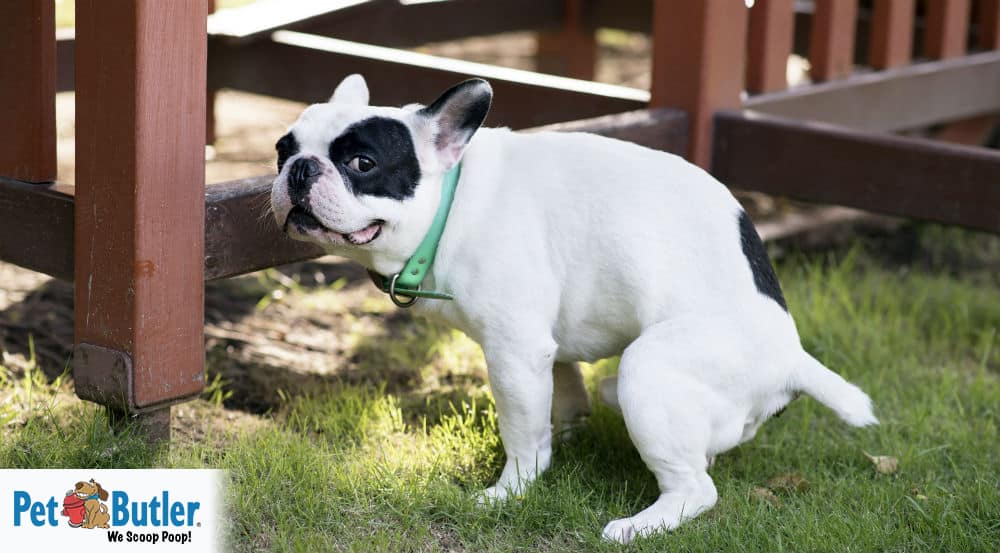Did you know that obesity isn’t unique to humans? Studies show that 1/2 – 2/3 of dogs are overweight. While we are very well versed on our own signs and symptoms of obesity, it can be much more of a challenge to understand our pets’ health in regard to their weight.
So, how can you tell if your pet is overweight, and when is it time to call your vet?
Body Condition Score and Weight
Let’s start with one of the fundamental tools veterinarians use to evaluate the health of canines: a Body Condition Score (BCS). The BCS is a rating of your dog’s current weight compared to its ideal weight. This is determined through visual and manual assessment. You can think of a BCS as the dog equivalent of a Body Mass Index (BMI) or a similar health indicator.
BCS scales can range from 1-5 or 1-9 and typically follow the same structuring. An example is shown below, with the “ideal” range at approximately 4 to 5.

Image Source: Purina’s Body Condition System
However, just like any analytical index, a BCS isn’t without its flaws. For one, the system is subjective, outlining generalized terms of what to look for in your pet. Second, body condition scoring isn’t going to be applied the same for all dogs and can be dependent on breed, gender and age.
As a species that ranges vastly in shapes and sizes, there is no one “ideal” weight for a dog. While there are standardized ranges for each breed, a healthy size is going to be unique to your pet alone. For example, healthy greyhounds typically have visible ribs due to their conformation and haircoat, but this same statement is not true for a golden retriever.
Ask your veterinarian to help identify a healthy weight range for your pet, which is likely to correspond to a range of 4-5 on the body condition score chart. Your pet will be overweight if they are 10-20% above that number on the scale and clinically obese if that number reaches more than 20%.
Not to fear, though. Just because you can’t rely on a BCS alone doesn’t mean you can’t determine if your pet is overweight. Here are some other signs you can look out for.
Physical Appearance
As with the visual examination involved in body condition scoring, the easiest way of understanding where your dog’s weight is at is simply by looking at them. Does your dog’s waist sag? Are there fat pads at the base of its tail and top of its hips? Do its legs stick out awkwardly to the sides instead of being directly under them? These could be signs of a weight problem.
In general, your dog should have its abdomen tucked up in relation to its chest. From an overhead view, a healthy dog is one that is wider at the chest and slimmer toward the waist. If your pet has an ovular body shape from the side or over the top, you’ll know something’s up.
One of the biggest visual indicators is the ribcage. In a healthy dog, the ribs shouldn’t be very prominent, depending on the breed, but they should be very easy to feel upon touch. A telltale sign of an overweight dog is one whose ribs take excessive palpation to find.
Respiratory Issues
Another common presentation of obesity in dogs comes in the form of breathing. If you’ve noticed that your pet struggles with breathing, namely wheezing or heavy breathing, this could be a result of being overweight.
Respiratory problems can even manifest when your dog isn’t exerting effort. Checking if and how intensely your dog snores can also provide insight into its weight situation. When it comes to snoring, more is not merrier.
Difficulty with Movement
As with humans, extra weight is going to place additional pressure on joints, making movement more challenging. If your pet isn’t moving around as well as it used to, weight can be the culprit. Better indicators come in the form of more difficult movements, like running, jumping and climbing stairs.
General Behavior
As a less specific rule-of-thumb, your pet’s overall behaviors can be indicative of needing to shed some pounds. If you find that your dog has become particularly sedentary, opting for laying around as opposed to going on walks, something likely isn’t right. An absence of energy and general lethargy is never going to be reflective of positive health.
If you find your dog following any of these patterns or displaying symptoms of obesity, it’s time to schedule a visit with your vet. At the end of the day, your veterinarian will be able to give you the most thorough and definitive answer regarding your pet’s health.
At Pet Butler, we want your pet to feel their best and be their healthiest. That’s why we specialize in caring for your pet by scooping up their waste. Find out more about our services or call 1-800-PET-BUTLER to learn how we can make your pet’s life happier, healthier and cleaner.
To continue learning about obesity in pets, be on the lookout for our upcoming articles on diseases mimicking obesity, how to help your pet lose weight and obesity in senior pets.




